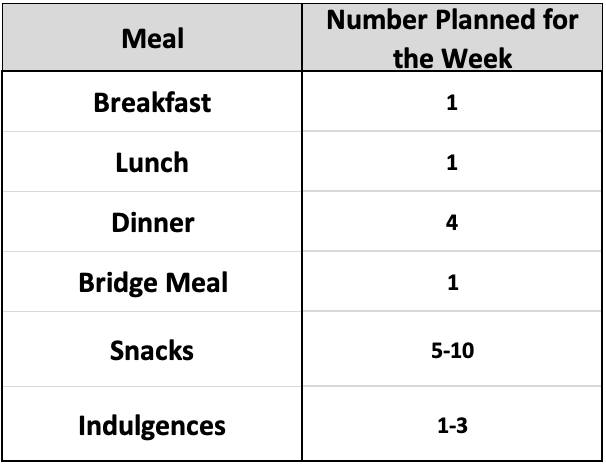In our last section (11), Eat Meal Replacements, Kits, and Delivery for the First Four to Eight Weeks of Your Diet, we stressed the importance of eating between 800 and 1200 calories/day for the first four to eight weeks of your diet by using portion controlled, convenient meals. But you can’t do this forever, nor would you want to. You are going to have to (and want to) start eating “real” food again.
During the next four to eight weeks of your weight loss journey you’re going to want to consume between 1200 and 1800 calories/day (Phase II Weight Loss). But we need to be smart about this. It is far too easy to fall back into old patterns and routines. What you were doing before wasn’t working and although there are thousands of ways to consume too many calories, you more than likely
- Ate out too often
- Ate too many indulgences (snacks)
- Didn’t cook enough at home
Eating out is the enemy of weight loss and friend of weight gain. Are there healthy and/or low-calorie options when eating out? Yes, of course. But unless you do your research ahead of time and know exactly what you are going to order and how it is going to fall within your calorie budget, you are setting yourself up for failure by putting yourself in a really difficult (and tempting) situation.
Two, I like to make a distinction between what I refer to as a snack and an indulgence. A snack is a fruit, vegetable or other non or slightly processed food (i.e., string cheese) that contains less than 150 calories per consumption (and not serving). I say “consumption” or “sitting” rather than serving because oftentimes a serving of something is only 150 calories, but you are going to consume 3 or more servings in one sitting.
People often consider soda, chips and candy bars as snacks. In my mind, these are not snacks, they are indulgences. Indulgences are fatty and/or sugary, highly or ultra-processed snacks with very little to no nutritional value. Indulgences are supposed to be a fun little treat and not a cornerstone of our everyday diets.
Three, it is completely possible to make high calorie food at home but cooking at home at the very least gives you a chance to eat fewer calories than you otherwise would eating out.
Meal Planning
There are an infinite number of ways to structure your eating, but I would recommend making a weekly meal plan consisting of one breakfast meal, one lunch meal, four dinners, five to ten snacks and one to three indulgences (Table 12.1). I would also recommend planning one “bridge” meal that is relatively easy to prepare in the event that you aren’t able to prepare one of your other dinners due to time or energy constraints.

An example of what your weekly meal plan might look like can be viewed below in Table 12.2.

Alternatively, if you would prefer to keep some meal replacements, kits or delivery in your meal plan that is okay too. In fact, in many weight loss programs they recommend continuing the use of meal replacements for convenience or if your weight starts to creep up again.
To cook meals at home you’re going to need to
- Find new recipes
- Organize, store, and retrieve the recipes when needed
There are millions of recipe sites online but where do you even start? I would recommend trying some of the recipes that I have posted in my Recipes that Don’t Suck webpage. These are the foods that I eat. It has taken me a really long time to find recipes that taste good to me. I personally hate finding new recipes. Trying them out is a lot of work and I am not a foodie. Just give me something that tastes good!
You can also try to copycat some of the recipes that you found to be good while using your meal kit or meal delivery services during your Phase I of weight loss. Another option would again be to copycat the foods you liked to eat out (i.e., chipotle burrito; smaller size of course). As The Science of Dieting site grows, I also hope to solicit recipes from our users to make finding recipes an easier task.
Two, I have made a couple of videos as part of my old nutrition consulting business, Energy Balance Nutrition Consulting, on using the Paprika Recipe manager to store and organize your recipes.
There are numerous other recipe managers out there but Paprika is the one that I personally use and am most familiar with. In addition to being able to store and retrieve your recipes you can also create a grocery list in the app, which is super helpful.
In The Science of Dieting weight loss e-course I also share with you how to organize your recipes by entrée, lunch versus dinner, bridge, and crockpot and a few grocery shopping tips as well. But I think this should give you a pretty good start. In our next section (13), You Must Self-Monitor and Self-Weigh to Stay on Track, I would like to talk with you about why meal planning and home cooking is a great start, but you need to have an awareness of what you are eating and how much you are exercising as well.